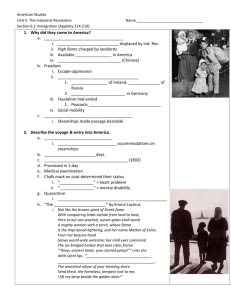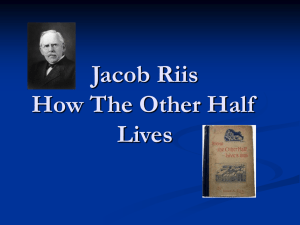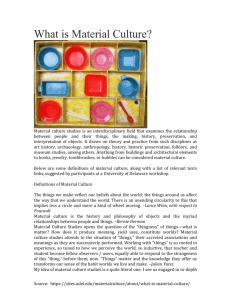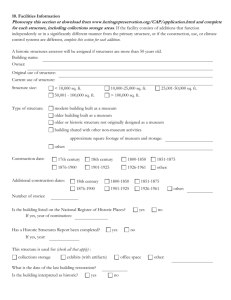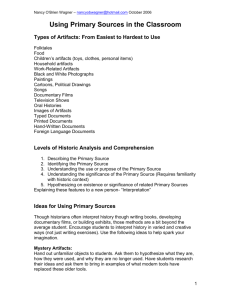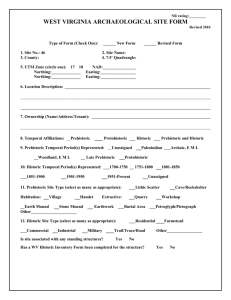history_11
advertisement
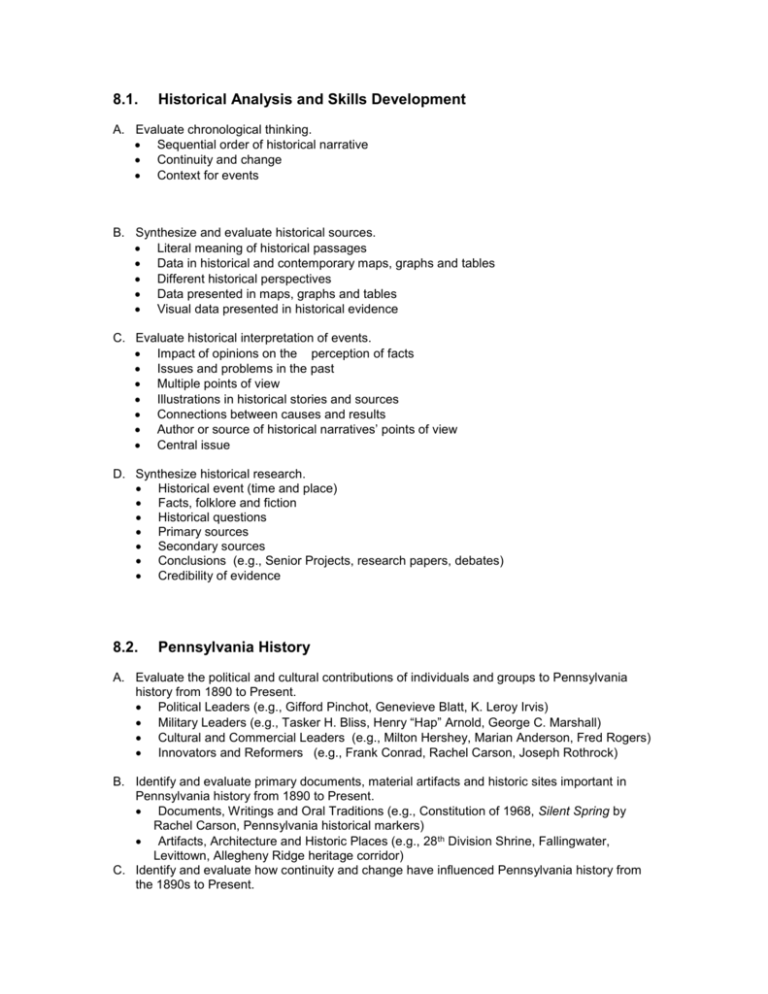
8.1. Historical Analysis and Skills Development A. Evaluate chronological thinking. Sequential order of historical narrative Continuity and change Context for events B. Synthesize and evaluate historical sources. Literal meaning of historical passages Data in historical and contemporary maps, graphs and tables Different historical perspectives Data presented in maps, graphs and tables Visual data presented in historical evidence C. Evaluate historical interpretation of events. Impact of opinions on the perception of facts Issues and problems in the past Multiple points of view Illustrations in historical stories and sources Connections between causes and results Author or source of historical narratives’ points of view Central issue D. Synthesize historical research. Historical event (time and place) Facts, folklore and fiction Historical questions Primary sources Secondary sources Conclusions (e.g., Senior Projects, research papers, debates) Credibility of evidence 8.2. Pennsylvania History A. Evaluate the political and cultural contributions of individuals and groups to Pennsylvania history from 1890 to Present. Political Leaders (e.g., Gifford Pinchot, Genevieve Blatt, K. Leroy Irvis) Military Leaders (e.g., Tasker H. Bliss, Henry “Hap” Arnold, George C. Marshall) Cultural and Commercial Leaders (e.g., Milton Hershey, Marian Anderson, Fred Rogers) Innovators and Reformers (e.g., Frank Conrad, Rachel Carson, Joseph Rothrock) B. Identify and evaluate primary documents, material artifacts and historic sites important in Pennsylvania history from 1890 to Present. Documents, Writings and Oral Traditions (e.g., Constitution of 1968, Silent Spring by Rachel Carson, Pennsylvania historical markers) Artifacts, Architecture and Historic Places (e.g., 28th Division Shrine, Fallingwater, Levittown, Allegheny Ridge heritage corridor) C. Identify and evaluate how continuity and change have influenced Pennsylvania history from the 1890s to Present. Belief Systems and Religions (e.g., Buddhism, Christianity, Hinduism, Islam, Judaism) Commerce and Industry (e.g., work of defense industries, rise and decline of the steel industry, increase of service industries) Innovations (e.g., polio vaccine, air pollution examined, nuclear power plants) Politics (e.g., Great Depression special legislative session, creation of the state income tax) Settlement Patterns (e.g., growth and decline of cities, coal towns, Pittsburgh Renaissance) Social Organization (e.g., creation of the State Soil Conservation Commission, First Amendment challenges to education, social services) Transportation (e.g., Pennsylvania Turnpike, Interstate highways, international airports) Women’s Movement (e.g., League of Women Voters, Commission on Women) D. Identify and evaluate conflict and cooperation among social groups and organizations in Pennsylvania history from 1890 to Present. Domestic Instability (e.g., The Great Depression, Three-Mile Island nuclear accident, floods of 1936, 1972 and 1977) Ethnic and Racial Relations (e.g., segregation, desegregation, racial profiling) Labor Relations (e.g., strikes, work stoppages, collective bargaining) Immigration (e.g., increased immigration from Europe, migration of African-Americans from the South, influx of Hispanic and Asian peoples) Military Conflicts (e.g., World War I, World War II, Persian Gulf War) 8.3. United States History A. Identify and evaluate the political and cultural contributions of individuals and groups to United States history from 1890 to Present. Political Leaders (e.g., Theodore Roosevelt, Woodrow Wilson, Franklin D. Roosevelt) Military Leaders (e.g., John Pershing, Douglas MacArthur, Dwight D. Eisenhower) Cultural and Commercial Leaders (e.g., Abby Aldrich Rockefeller, Langston Hughes, Alan Greenspan) B. Identify and evaluate primary documents, material artifacts and historic sites important in United States history from 1890 to Present. Documents (e.g., Treaty of Versailles, North Atlantic Treaty, Neutrality Acts) 20th Century Writings and Communication (e.g., Coolidge’s “The Business of America is Business,” King’s “I Have A Dream,” Armstrong’s “One Small Step for Man”) Historic Places (e.g., Ellis Island, Pearl Harbor, Los Alamos) C. Evaluate how continuity and change has influenced United States history from 1890 to Present. Belief Systems and Religions (e.g., 20th century movements, religions of recent immigrants) Commerce and Industry (e.g., corporations, conglomerates, multinational corporations) Innovations (e.g., the Tin Lizzie, radio, World Wide Web) Politics (e.g., New Deal legislation, Brown v. Topeka, isolationist/non-isolationist debate) Settlement Patterns (e.g., suburbs, large urban centers, decline of city population) Social Organization (e.g., compulsory school laws, court decisions expanding individual rights, technological impact) Transportation and Trade (e.g., expansion and decline of railroads, increased mobility, Internet) Women’s Movement (e.g., right to vote, women in the war effort, Women’s Peace Party) D. Identify and evaluate conflict and cooperation among social groups and organizations in United States history from 1890 to the Present. Domestic Instability (e.g., Great Depression, assassination of political and social leaders, terrorist threats) Ethnic and Racial Relations (e.g., internment camps for Japanese Americans, Montgomery Alabama Bus Boycott, land tensions with Native Americans) Labor Relations (e.g., rise and decline of industrial unions, free trade agreements, imports impact on domestic employment) Immigration and Migration (e.g., anti-immigrant attitudes, quota laws, westward and southward migration) Military Conflicts (e.g., World War I, World War II, War on Terrorism) 8.4. World History A. Evaluate the significance of individuals and groups who made major political and cultural contributions to world history since 1450. Political and Military Leaders (e.g., Askia Daud, Simon Bolivar, Napoleon Bonaparte, Mao Zedong) Cultural and Commercial Leaders (e.g., Chinua Achebe, Gabriel Garcia Marquez, Akira Kurosawa, Christopher Columbus) Innovators and Reformers (e.g., Nelson Mandela, Louis-Joseph Papineau, Mohandas Gandhi, Alexander Fleming) B. Evaluate historical documents, material artifacts and historic sites important to world history since 1450. Documents, Writings and Oral Traditions (e.g., Declaration of the International Conference on Sanctions Against South Africa; Monroe Doctrine, Communist Manifesto, Luther’s Ninety-five Theses) Artifacts, Architecture and Historic Places (e.g., Robben Island, New York World Trade Center, Hiroshima Ground Zero Memorial, Nazi concentration camps) Historic districts (e.g., Timbuktu, Centre of Mexico City and Xochimilco, Taj Mahal and Gardens, Kremlin and Red Square) C. Evaluate how continuity and change throughout history has impacted belief systems and religions, commerce and industry, innovations, settlement patterns, social organization, transportation and roles of women since 1450. Africa Americas Asia Europe D. Evaluate how conflict and cooperation among social groups and organizations impacted world history from 1450 to Present in Africa, Americas, Asia and Europe. Domestic Instability Ethnic and Racial Relations Labor Relations Immigration and Migration Military Conflicts
